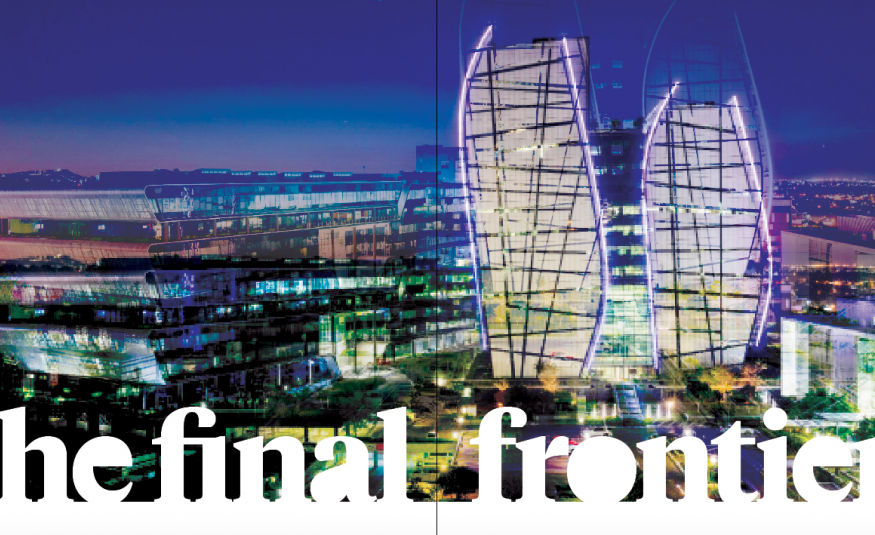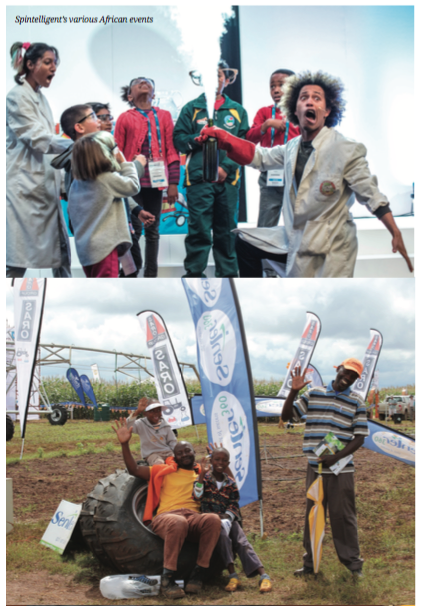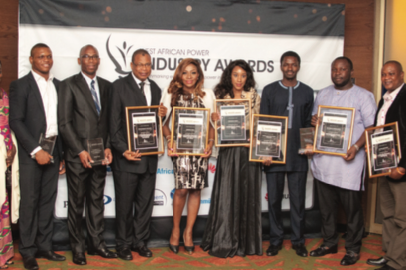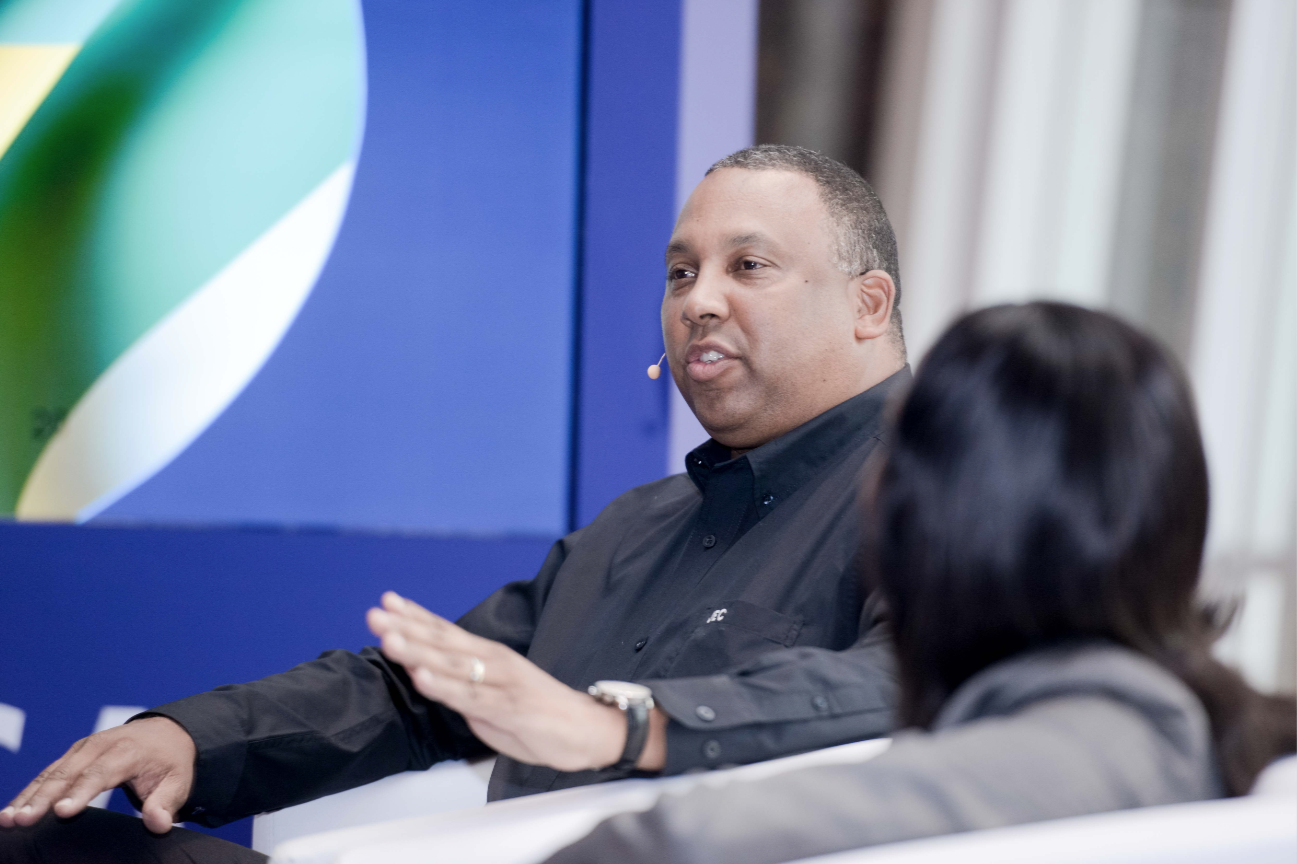ISSUE 5's Cover Feature:
As global markets saturate, Sub-Saharan Africa is billed as an exciting new frontline for exhibition organisers, albeit one beset with challenges
- Words by Tom Hall
When discussing beloved destinations, the well-travelled folk who frequent EW’s international trips regularly namecheck South Africa. But, despite its magnetism, the political and cultural state of the region is unstable.
Although it officially climbed out of a recession this year, there are bitter divisions within South Africa’s socially democratic ruling party, the ANC, and declines in business confidence. President Jacob Zuma, meanwhile, narrowly survived a secretive no-confidence vote.
Atoning for this are recoveries in South Africa’s agricultural, mining and electricity markets. Tourism, meanwhile, has hit an all time high according to Euromonitor reports.
Of the international organisers already immersed in Sub-Saharan Africa, UK-based Montgomery Group‘s South African division Specialised Exhibitions Montgomery has a particularly long history, pioneering exhibitions in Africa since 1967 (see time line on p40).
Discussing the South African exhibition market over coffee at Montgomery’s London-headquarters, managing director Damion Angus talks with fondness about the region and Montgomery’s history therein.
“Montgomery’s experience in Sub-Saharan stretches right back to Bryan Montgomery, who loved spending time in the country. Montgomery at the time was focused on international expansion, and had recently entered Bahrain. The opportunity seemed right to invest in South Africa even though back then it was a very different place under Apartheid.”
“It’s not hard to do business in South Africa. You can get your money out of the country fairly easily. People worry about safety, but cities are dangerous anywhere in the world.
“South Africa grew up on mining, but that industry is currently suffering and is in tough times – its suppliers however are trying to diversify. Our mining show portfolio is now not just about mining, but has become focused on a broader range of industries crossing into new sectors. ”
Angus has optimism that South Africa’s current vicissitudes could change in the long term, but he stresses caution.
“Someone like (Presidential hopeful) Cyril Ramaphosa could help the country really fly. He’s very business focussed and is also already very wealthy, so hopefully will be less prone to greed.”
UFI’s president-elect for 2019 and CEO of the Johannesburg Expo Centre (JEC) Craig Newman is similarly animated when discussing South Africa. His career in exhibitions began unintentionally when, as a musician drumming for a living, he was introduced to the exhibition sales industry. His track record of success across various exhibition disciplines culminated in becoming CEO of Johannesburg Expo Centre (JEC).
“The market in South Africa has been up and down. It is a well-established market. We have a 124 year-old exhibition history here. Right now, there’s a tremendous amount of interest with a lot of big organisations seeing South Africa as a gateway into the rest of Africa.
“They’re attracted by the expertise, experience, and the professional people we have. The solid infrastructure and networking opportunities are also a pull. ”
Damion Angus, Montgomery
While South Africa is an exhibition mainstay, Sub-Saharan African countries are following suit and embracing the potential of MICE. However, Martin März, founder & managing partner of Fairtrade says reaching a critical mass of exhibitors and visitors is still a limiting factor, although change has been rapid.
“The limited economic size of most of the 49 Sub-Saharan countries represents a major challenge. Another lies in their volatility. When Ebola hit the region in 2014, many exhibitions suddenly collapsed because exhibitors would no longer travel. Once under control, reviving the shows turned out to be difficult and only the stronger ones survived.
“Tough organiser competition in Sub-Saharan Africa is another challenge. Just four years back,over ten European and African organisers competed in food technology events in Nairobi. Today, just one or two events are still in the market.”
Gaining a deep understanding of the Sub-Saharan African market is also stressed by Angus, whose company’s African business accounts for just under a third of its total revenue. Montgomery also has an ownership in the Johannesburg Expo Centre, a South African organising arm and two hubs in East and West Africa.
“Outside of South Africa we have to focus on a large number of organic launches as there are few opportunities for acquisition. Even within South Africa these opportunities are limited and therefore this market suits entrepreneurial outfits that can deliver events with low overheads. Visitor promotion is also different. In South Africa, there’s a lot of use of radio, outdoor billboards, and banners. East and West Africa operate via newspapers and mobile so it’s that much different to target a sector.
“In general, you have a smaller pool of contractors and exhibitors in Sub-Saharan Africa. The pricing is lower too. When looking to countries like Nigeria, prepare yourself for a ten-year slog. You really need to be there, on the ground. It’s the same in Kenya too, although business is slightly more straight forward.”
Finding quality local service providers in Sub-Saharan Africa for stand building, furniture, but also for local sales, exhibitor and visitor promotion campaigns is another problem highlighted by März. But, the situation is improving rapidly.
In 2013 Fairtrade started its first show in the region, in Ghana, where exhibitors and associations had a new interest. “Local exhibitors, even local daughter companies of globally acting international technology leaders, did not understand what specialised trade shows are all about, what is necessary to make them a success and how to use them to their own favour.
“Just four or five years later, exhibitors and trade visitors know what to expect. Government institutions supporting their exhibitors are willing to engage long-term and governmental institutions acting as local supporting authorities for events increasingly understand the benefits.”
The way forward for organisers, März adds, is to deliver professional exhibitions living up to European standards, just on a smaller scale. “If they don’t manage to do so, others are already on stand-by to replace them immediately.”
Spintelligent’s CEO David Ashdown also highlights the challenges working in remote areas such as Lubumbashi in DRC and Chisamba in Zambia: “You don’t always have the luxury of a CTICC facility like in Cape Town. You have to make it work with what you are given and we always do.”
Martin März, founder & managing partner of Fairtrade
Spintelligent’s Agritech Expo Zambia is an award-winning case in point. Formed in 2014, the event this year attracted 17,000 visitors and the Zambian President Edgar Lungu is a regular VIP attendee.
“We built the expo from scratch in a field in the middle of Zambia and looking at this year’s event photographs you can see we have come a long way. The team’s commitment, blood, sweat and tears bear testimony to the uniqueness of this event.”
This positive sentiment is echoed by Newman who says Sub-Saharan Africa is ready to embrace business tourism. “Square metrage is the currency of exhibitions, and in Europe and America, the markets are saturated. Sub-Saharan Africa is the next frontier, and I spend a lot of time in my role at UFI educating the industry on this.
“The political instability across Sub-Saharan Africa creates a lot of low confidence. However there’s a lot of investment by southern countries into their infrastructures and the appetite is there.
“Over one or two years your return won’t be good, but if you commit for around for five-to-ten years, the rewards will be vast.”
Back on the topic of South Africa’s market, Newman discusses the mature market’s ambition. “South Africa has seen growth in exhibitions, and Reed, Messe Frankfurt and DMG have made big investments. Key sectors include mining, construction, health, medical, tourism, finance, ammunition, weapons. The associations help and South Africa Convention Bureau is really embracing businesses.”
Statistics back up Newman’s observations. A study, commissioned by AAXO and conducted by Grant Thornton, shows that the average number of exhibitors in South Africa grew from 120 to 180 from 2006 to 2016, largely driven by a doubling of trade exhibitions (2006-2015).
“The exhibitions industry is a very competitive market, which is giving way to organisers becoming increasingly professional and skilled. That’s what makes AAXO so great, is that they offer organisers the ability to upskill, formalise and professionalise, which benefits both the industry and the larger economy,” explains deputy CEO at Grant Thornton, Gillian Saunders.
One company modelling a Sub-Saharan African success story is Spintelligent, a company that’s growing organically, and on the lookout for partnership and acquisition opportunities.
The Cape Town-based trade exhibition and conference organiser had a strong first half of 2017 with all of four of its flagship events, which include African Utility Week and DRC Mining Week (up 67 per cent), pulling off record results.
“Spintelligent has a busy five months ahead,” says MD David Ashdown. “Exhibition and conference revenues are up year-on-year and attendee numbers are growing exponentially. The demand for face-to-face events as a platform to share knowledge and facilitate trade is increasing and proven to provide African buyers and sellers an improved ROI over traditional marketing medium.”
While there are opportunities for investors, Angus stresses caution. “It’s about getting traction across enough shows to make it work for you. The ‘Africa Rising’ message popularised by The Economist was a boost, but it has since dipped.
“The Chinese definitely understand Africa and have invested heavily but there is some contention about the Chinese taking African business so one has to be wary of that.”
Managing director of Reed Exhibitions Africa Carol Weaving recently told MBB Media’s Matthias Tesi Baur that, despite the challenges facing Sub-Saharan Africa, South Africa has been attracting international investment interest.
“The success of business in Africa and also the exhibition industry rests in face-to-face, partnerships and relationships. It is, therefore, an ideal launchpad into business in the rest of the continent – a market of approximately one billion people.
“Indeed, South Africa was 74th on the ‘Ease of doing Business’ ranking in 2016, according to the World Bank. This puts us ahead of China.
“Our people are open and friendly and the demographic in South Africa is diverse with a growing middle class and increased spending power. We also have an abundant supply of skilled and unskilled labour available.
“The small size of tradeshow markets in relation to the economies of countries in Africa shows that there is definitely room for growth.”
With plenty to love, and much to discuss, South Africa will prove an exciting setting for UFI’s Global Congress in November. Its theme ‘pressures and profits in the exhibitions industry’ is certainly apt for Sub-Saharan Africa.
While the developed exhibition sector of South Africa is increasingly providing a launchpad into the wider Sub-Saharan market, investors looking for a quick buck might be disappointed. However, with the right knowledge, not to mention bravery, long-term projects can be rewarded. As Angus stresses: passion could be your business edge. EW












